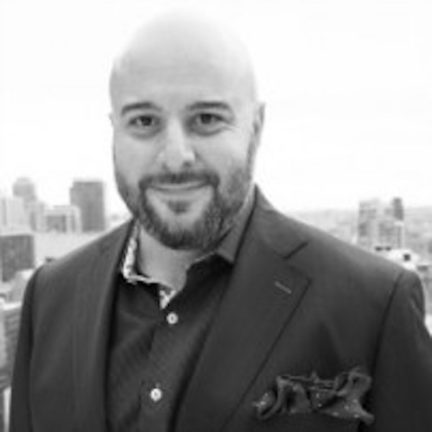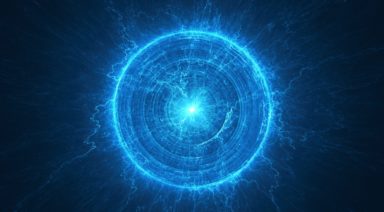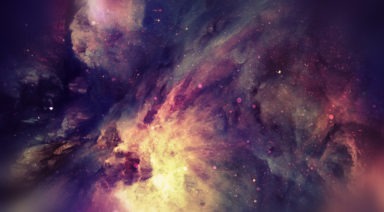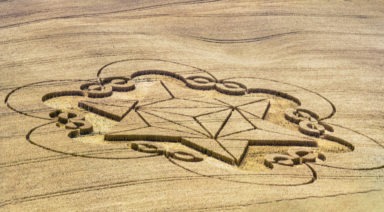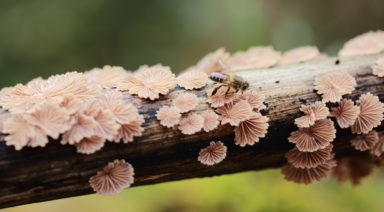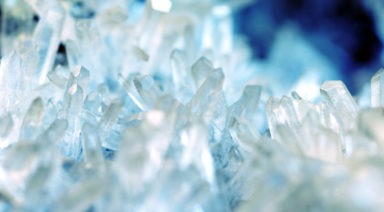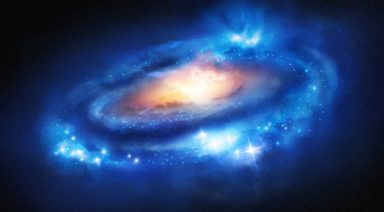What is Freemasonry?

Ancient rituals, colorful aprons, hidden handshakes and obscure passwords. For many outsiders, Freemasonry is an enigma wrapped in one secret after another. But for its estimated six million members worldwide, Freemasonry is a serious engagement.
Conspiracy theorists be damned, say the Masons. Contrary to popular notion, members of the world’s oldest fraternal organization do not control world governments and the global banking system. Labeled as a ‘secret’ society, Freemasonry is far from such. Its iconic square and compass emblem, as recognizable as McDonald’s arches, adorns their buildings, merchandise and most highway welcoming signs.
It’s easy to answer the question of what Freemasonry is not. Answering what Freemasonry is and what Freemasons do is more difficult. ‘The Craft’ means something different to each member. Ask ten Freemasons what they do and you’re likely to receive ten different answers, including the go-to spiel:
Freemasonry is a system of morality, veiled in allegory and illustrated by symbols.
An Esoteric Tradition
The creation of Freemasonry has no specific date. It is an ancient esoteric tradition of self-knowledge and personal improvement that has stood the test of time. In its current form, Freemasonry dates from the formation of the first Grand Lodge of England in a tavern in 1717, and before then to the Medieval stonemason guilds. Trace the origin of Masonic symbolism back further and it stretches all the way to the Roman Schools of Mysteries, the teachings of the Cathars, the Kabbalah, the Osirian Mysteries of Ancient Egypt the Sumerians, Phoenicians and the Socratic Mysteries of Ancient Greece.
The oldest existing written record of Freemasonry, known as the Regius Manuscript, dates around 1390. However, the contents of that document shows that Freemasonry was in existence for a long time before its composition. During the Middle Ages all Freemasons were operative builders of the great European cathedrals and other such structures of the time in the Gothic style of architecture.
From Operative to Speculative
Operative Freemasons designed the buildings, dressed the stone from the quarries and laid the stones in the walls. They set up arches, pillars, columns and buttresses. Laid floors and built roofs. They carved out decorations, made and fitted stained glass windows, and produced sculptures. Their work called for a high degree of skill and genius, and required a great degree of knowledge in mechanics and geometry. They were the great artists of the Middle Ages.
Freemasons organized themselves into lodges. They met in temporary buildings attached to the uncompleted structure. The lodge was governed by a Master assisted by Wardens. A Secretary kept minutes and a Treasurer dispensed funds for the relief of injured, sick or distressed Master Masons, their widows and orphans. Such lodges were the forerunners to the modern Masonic lodge system.
During the sixteenth and seventeenth centuries social conditions underwent a revolution and brought about a decline in operative Freemasonry. To increase their numbers, Freemasons began to accept non-Operative members. Gentlemen with no intention of becoming builders joined Masonic lodges for social purposes and out of curiosity for the Craft’s ancient customs.
On June 24, 1717, at least four of the old lodges of London and Westminster met in London and organized a Grand Lodge. Speculative Masonry (i.e., Masonry in a moral and symbolic sense, as opposed to Operative Masonry ) was born and, thus, the modern three degree system of instruction was implemented.
Modern Builders of the Mind, Body and Soul
Medieval stonemasons refined rough stones hewed from quarries to construct incredible buildings. Modern Masons refine their mind and spirt in a personal transformation from symbolic rough ashlar (roughhewn stone) to perfect ashlar (perfectly shaped building block).
Lessons are imparted in three separate stages, or Degrees:
- 1st Degree — Entered Apprentice
- 2nd Degree — Fellowcraft
- 3rd Degree — Master Mason
Each degree represents an advancement in moral and spiritual education, and a progression of self-knowledge. The third degree teaches physical death and spiritual rebirth through the story of Hiram Abiff, the master builder of King Solomon’s Temple and central figure of Masonic education.
Erected in 970 BCE, King Solomon’s Temple was considered the greatest structure ever built and an earthly symbol of man’s creation through God’s guidance. Freemasonry uses the Temple as a symbol of man who, with God’s guidance, should strive to create a superstructure of himself, perfect in all parts: mind, body and soul.
Is it a Religion?
Freemasonry as an organization recognizes the existence of supreme being, and new members are required to profess such a belief. Beyond that, Freemasonry has no religious requirements or dogma, nor does it teach specific religious beliefs:
- Freemasonry is not a religion nor a substitute for religion. It requires of its members a belief in a supreme being as part of the obligation of every responsible adult, but advocates no sectarian faith or practice
- Atheists cannot be Freemasons
- Masonic ceremonies include prayers, both traditional and extempore, to reaffirm each individual’s dependence on their supreme being and to seek divine guidance
- Freemasonry is open to men of various faiths but religion may not be discussed at Masonic meetings
Freemasonry lacks the basic elements of religion:
- It has no dogma or theology, no wish or means to enforce religious orthodoxy
- It offers no sacraments
- It does not claim to lead to salvation by works, secret knowledge or by any other means
- The secrets of Freemasonry are concerned with modes of recognition, not with the means of salvation
Keeping Hush
Freemasonry is not a secret society but is a society of secrets. There are Masonic secrets, but despite popular belief, these secrets do not entail the location of the Holy Grail, the design of the Egyptian pyramids or the propagation of a New World Order. Freemasons don’t know who killed JFK, are not aware of the entrance to hollow earth and are not taking orders from alien overlords.
The Secrets of Freemasonry
They are, at their most basic, the signs of recognition, both physical and verbal, which Masons across the world use to prove and recognize one another.
Masonic ritual states that the peculiar handshake of a Mason is ‘a certain friendly or brotherly grip whereby one Mason may know another in the dark as in the light.’
It’s pretty simple, really. By shaking each other’s hand in a variety of ways, a Freemason identifies another Freemason — a man he has a common connection to — and the level of learning he has attained.
Masonic modes of recognition — the handshakes and passwords — are readily found on the internet. But don’t get too excited in thinking that a simple Google search will enable you to crack the shell of this timeless organization. To know the signs of recognition — the physical secrets — is not to know Freemasonry, just as reading an article on how to perform an emergency repair of a leaking abdominal aortic aneurysm does not qualify you as a brain surgeon.
What’s the Purpose of it All?
Freemasonry is an experience of the heart, mind and soul and no man can make claim to know the heart, mind and soul of another. While the purpose and meaning of Freemasonry may be difficult to define due to personal nature of the Craft, a simple answer is found in the pages of Masonic ritual.
The purpose of Freemasonry is established during the opening of a Lodge, in an exchange between the two principal officers known as the Worshipful Master and the Senior Warden.
The principal officers of a Masonic lodge are: Worshipful Master (in charge), Senior Warden (second in charge), Junior Warden (third in charge). Other officers include: Secretary, Treasurer, Senior Deacon, Junior Deacon, Chaplain, Tyler, Marshall.
Worshipful Master: What came you here to do? Senior Warden: To learn to subdue my passions and improve myself in Masonry.
Here is a clear answer to what Freemasonry is and what Freemasons do. Freemasons learn to subdue their passions and improve themselves.
Note use of the word ‘subdue’ rather than the word ‘suppress’. The Miriam-Webster Dictionary defines the word ‘subdue’ as: to achieve a victory over. The definition of ‘suppress’ is: to hold back the normal growth of and to put a stop to. Freemasonry teaches that true mastership is obtained in keeping one’s passions in check, not in stamping them out altogether.
From Pythagorus to Shaq
The information contained within Masonic teaching has been around for centuries, some of it dating back more than 2,000 years and employed by such great minds as Pythagoras, Lao Tzu, Plato and Aristotle.
In more recent times, figures like George Washington, Buzz Aldrin, Sugar Ray Robinson, Theodore Roosevelt, Yitzak Rabin, Winston Churchill, Jesse Jackson, and Billy Graham were all influenced by Masonic symbols. Walt Disney, Captain James Cook, Lewis and Clark, Mark Twain, Oscar Wilde, Wolfgang Mozart, Pat ‘Mr Miyagi’ Morita and Shaquille O’Neal all took part in Masonic learning. They were presented with symbols such as a pencil, a square, a circle, a beehive, a level, a chisel, skull and crossbones, and a sword, and taught to probe deep into the lessons conveyed by each.
Something Deeply Personal
At its heart, Freemasonry is a deeply personal pursuit and means something different to each of its practitioners. It is a commitment by an individual to pursue a time-honored system of instruction for the betterment of the mind, body and soul.
Freemasonry is a science, a philosophy, an art and a universal knowledge that provides an understanding of how the individual fits into the universe and how the universe fits into him.
Through this knowledge, a Freemason comes to know themselves and their function in existence, and improve upon that existence for a better station in life.
Mass Media Mind Control

I have had wide and varied interests since a very young age and have loved learning all of my life. Simply, I believe life should be lived as a great adventure of growth and learning in every way. In science, my interests started in crystallography and minerals and progressed through the several branches of science into politics, philosophy, religion and all things esoteric.
What is Mind Control?
In the late 1980s, the most interesting research I began exploring was on mind effects or, more popularly, mind control. My interest grew out of the misuses of the information released in the Church Committee hearings of the 1970s dealing with the CIA programs in this area. At the same time, the positive possibilities for these new technologies were also exciting. Stimulating optimum human performance, accelerated learning, meditation, relaxation, and focus could all be improved. In fact, even so-called altered states could be enhanced or even stimulated. The most fascinating possibilities, however, were even more startling.
The idea that perhaps we could stimulate what is now referred to in some literature as “anomalous human capability” or, in the past referred to as ESP or extrasensory perceptions, may be possible.
In fact, this may be the next evolution of humans on earth as many of us are acknowledging and science is proving.
Control of the Mind and Body
The predominant brain wave frequencies indicate the kind of activity taking place in the brain. There are four basic groups of brain wave frequencies that are associated with most mental activity. The first, beta waves, (13-35 Hertz or pulses per second) are associated with normal activity. The high end of this range is associated with stress or agitated states that can impair thinking and reasoning skills. The second group, alpha waves (8-12 Hertz), can indicate more relaxation. Alpha frequencies are ideal for learning and focused life form energy. The third, theta waves (4-7 Hertz), indicate mental imagery, access to memories and internal mental focus. This state is often associated with young children, behavioral modification and sleep/dream states. The last, ultra slow, delta waves (.5-3 Hertz), are found when a person is in deep sleep.
The general rule is that the brain’s predominant wave frequency will be lowest, in terms of pulses per second, when relaxed, and highest when people are most alert or agitated.
What is Entrainment?
External stimulation of the brain by electromagnetic means can cause the brain to be entrained or locked into phase with an external signal generator. Predominant brain waves can be driven or pushed into new frequency patterns by external stimulation. In other words, the external signal driver or impulse generator entrains the brain, overriding the normal frequencies, and causing changes in the brain waves. Changes in brain waves cause changes in brain chemistry; which then cause changes in brain outputs in the form of thoughts, emotions or physical condition.
As you are driven, so you arrive – brain manipulation can be either beneficial or detrimental to the individual being impacted depending on the level of knowledge or the intentions of the person controlling the technology.
Is it Possible to Train Consciousness?
Consciousness training is also a big theme in cults, religious organizations, and others pursuing the “new age.” Science has now gained a greater understanding of how the mind and brain work so that what used to take years, or even decades, to achieve, can now be mastered in weeks, days or even minutes. For instance, in 1996 a method and apparatus for the use in achieving alpha and theta brainwave states and effecting positive emotional states in humans were developed.
Two years later another patent was issued which could create desired consciousness states: In the training of an individual to replicate such states of consciousness without further audio stimulation, such states may be transferred from one human being to another through the imposition of one person’s EEG, superimposed on desired stereo signals and onto another individual, by inducement of a binaural beat phenomenon.
Is Thought Transference Possible?
This is interesting in that it speaks to the ideas alluded to earlier by the military in changing the memory of a person by imposing computer-manipulated signals which would integrate with the normal memory of a person. The possibility of abuse is obvious and the opportunity for personal advancement is also great.
Consider the possibility of gaining education by the transfer of data directly into the human brain by these new methods rather than the standard methods of learning. A serious consideration in developing these types of memory transfer systems will be the fact that they bypass normal intellectual filters – they are deposited into the brain as fact, without question or careful consideration. What happens when new information conflicts with existing information? Would it be possible to include hidden information meant to unduly influence things like religious beliefs, politics or consumption of goods and services or politics?
Ethical Questions Abound
The possibilities are immense and the ethical and moral questions surrounding these matters equally large. We can no longer avoid the debate; in fact, the debate is lagging far behind the scientific advancements. In the interim, there are some simple things we could all do to enhance our own, or our children’s, learning capacity by applying simple and available knowledge. For instance: “researchers at the Center for the Neurobiology of Learning and Memory at University of California, Irvine, have determined that 10 minutes of listening to a Mozart piano sonata raised the measurable IQ of college students by up to nine points.” This is a simple thing of great use to anyone seeking self- improvement as an example.
There are several articles and materials that speak to the various ways that these technologies can be applied and used beyond the scope of this article. Let’s get to the media applications.
The Use of Media
Radio, TV, the Internet, the power grid, cell systems or any other electromagnetic carrier can be used to carry a signal that will influence the behaviors of most people in close proximity to the signal. What such signals can do is cause a person, for instance, to drop into a light altered state. Like when people come home from work, sit in front of the TV and watch the nightly news feed. Within a few moments someone begins saying to you, “honey, dinners ready.” They hear nothing… they are no longer watching the “programming;” they are being programmed with the latest values, beliefs, and ideas being pressed into the consciousness of most people through media.
By oscillating a signal in a certain way, emotional states can easily be reformed so that the reaction to the advertising, political propaganda or “news” is as predicted by those generating it across the broad population as intended by them.
In other words, it is about control and manipulation. It is really very simple. People in psychology understand the Frequency Following Response (FFR). When applied to advertise or any other media, it is incredibly compelling.
Refined Control Tactics
Much more can be done with this technology in terms of the information density that can be sent in on such carriers. The objective of many military planners is to be able to even transfer thought and memory sets. These kinds of technology when applied to media particularly when coupled with mass surveillance of the population this allows those in control of such technologies to have profound effects on a highly individualized basis. This delivery system can be tailored to an individual person to have specific influences on that individual personality type and subtype.
The predictability of behavior for the target of the technology is so refined that is better at predicting an individual’s future behavior they could about themselves. Think about this for a moment.
Perpetual Worry as a Means of Imprisonment
Yet the simplest mechanism for inhibiting higher mind functions, peak performance, and anomalous human capabilities is to just keep people in a constant state of worry, agitation, and fear. Sound familiar? In these states, it is not possible to reach a higher state of awareness. These emotional states do not allow the brain to operate in a manner that will allow this possibility. Fear is the adversary and is at the root of the misuses of these technologies. The government fears an enlightened population where the light of truth shines within its darkest corners. An awakened population cannot be resisted by structures based on fear.
The Next Evolution of Humankind
After 40 years of research in the open literature and opportunities to meet and spend the time needed with the best bio-physicists in the world has allowed me insight into this area. During my time with the Lay Institute in Dallas, I put together a private conference on mind effects with some of the best people in the world. The surprise was not a story about controlling people and manipulating populations, although everyone agreed this was the case in the 21st century in so many ways. The biggest insight had to do with the next evolution of humankind.
Voiced first by the late sister, Dr. Rosalie Bertell, in her presentation about her belief that in what man was trying to create in electronics were already latent in every person waiting to be awakened. The theme was repeated in every presentation that explored the possibilities of reclaiming our birthright in terms of what we are as human beings and the endless possibilities that occur when we begin to recognize ourselves.
As we evolve and grow within the framework of this reality we also are beginning to recognize in the science of consciousness and what we know…we are more than we think, and we are beyond what we know. Together we change the world by fearlessly knowing that we each have all that we need to engage the world and are not alone in it. Our humanity is in fact our very salvation if we can recognize and alter our awareness.

